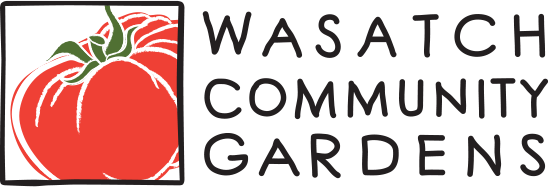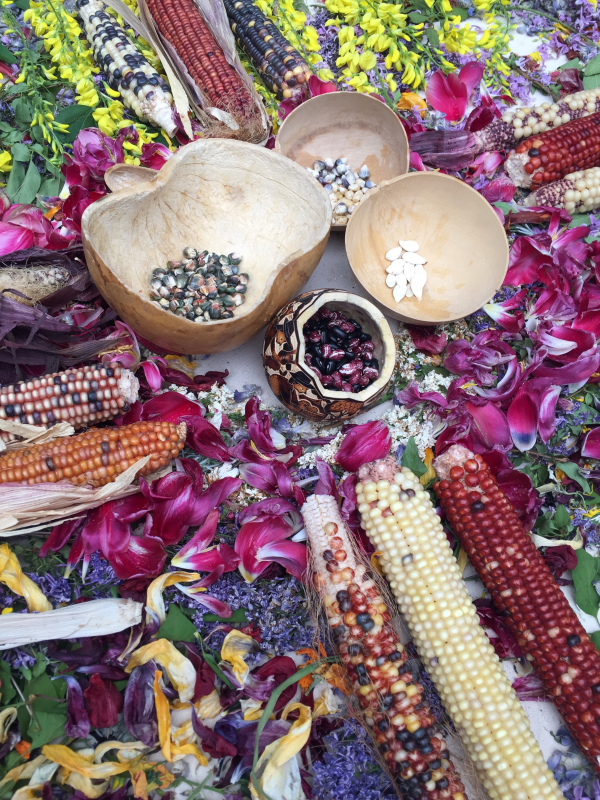"En el centro contemplamos al maíz, el que surge de un yollotl representado por un grano de maíz en su raíz. En náhuatl yollotl significa corazón, y también puede interpretarse como la semilla de algo. En este caso, el maíz es el" corazón de la milpa”. Al maíz lo rodea una corona de flores de calabaza como símbolo de protección. En el fondo, contemplamos a las hojas de maíz como homenaje a la figura de Quetzalcoatl, quien se transformó en hormiga para ir en busca del maíz para alimentar a los humanos. En la obra se contemplan a dos hormigas.
Alrededor del maíz se observa el frijol ayocote, del náhuatl ayecohtli o frijol botil, nativo de México y del continente americano. Los hermosos frijoles son morados y de flores rojas. Las enredaderas de los frijoles están conectadas a las hojas del maíz para mostrar su relación simbiótica.
Las enredaderas crecen hacia el cielo para formar lunas crecientes. Ahí se unen con las otras fases de la luna representadas por diversas formas de calabaza de castilla, también nativa de México. En la obra he incluido a la luna como símbolo del conocimiento ancestral que nos enseña el honrar a la tierra, el cultivo y la cosecha.
También contemplamos a una abeja y una catarina que nos recuerda el papel tan importante que tienen los insectos en la milpa. Esta pieza refleja de manera entera a la naturaleza que envuelve el concepto de la milpa, así como su conexión con el cielo y la tierra.”
"At the center is the maíz. It is growing from a yollotl with a corn kernel inside. In nahuatl yollotl means heart, but it can also mean the seed of something, and maíz is the 'heart' of the milpa. Surrounding the corn is a crown of squash blossoms to show the protection that it provides for the maíz. The bottom corn leaves are an homage to the story of Quetzalcoatl and how he transformed into an ant to find maíz to feed the humans. You can spot two ants nearby as well.
Surrounding the corn are some Scarlet Runner Beans, which are native to Mexico & the Americas. It’s also known as frijol ayocote from nahuatl ayecohtli or frijol botíl. It has beautiful purple beans and red flowers. The beans’ vines are connected to the corn’s leaves to show their symbiotic relationship.
The vines reach up to the sky to form crescent moon phases. There, they meet with the other moon phases represented by varying forms of squash, Calabaza de Castilla, also native to Mexico & the Americas. I include the moon as a symbol of the ancestral knowledge passed on to us about the seasons, when to harvest, and when to honor the earth and crops.
I also included a bee and a ladybug to remind us of the important role that beneficial insects play in the milpa. Overall, the piece’s circular nature is symbolic of the interconnectedness of the three sisters, as well as the earth and sky."

